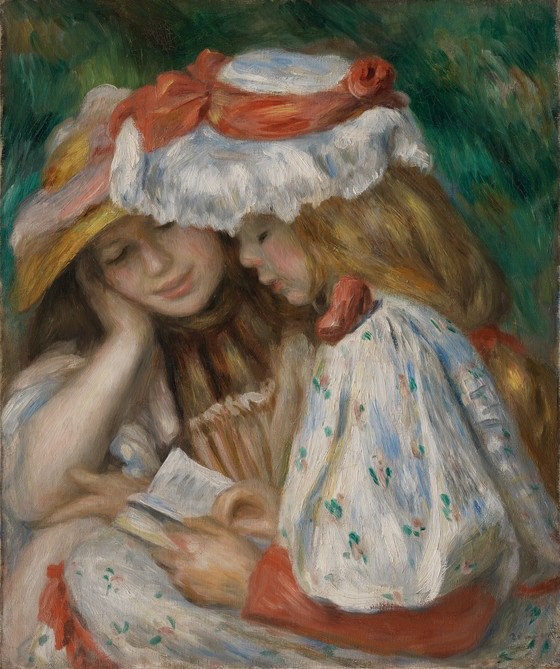Recently, Philip Capin and his colleagues published a valuable study in Scientific Studies of Reading. This research combined data from 66 observational studies of reading. Capin and company found that 23% of reading instruction was devoted to reading comprehension, and that this amount has increased since 2000. However, they also identified some unfortunate trends.
In the 1970s, Dolores Durkin shocked the reading world when she reported the results of her landmark observational study. She revealed an appalling paucity of comprehension teaching. Her team observed almost 75 hours of reading instruction in upper elementary classrooms but only found about 20 minutes of comprehension teaching.
Some of this scarcity may be attributed to narrow definitions – or more accurately to differing conceptions as to what it means to teach comprehension. This is an issue that persists with the new study, even though it is open to a more extensive buffet of teaching moves.
Prior to the 1970s, research on the teaching of reading comprehension was almost non-existent. The few existing comprehension studies focused on reading drills aimed at teaching words or increasing reading speed. It, seemingly, never occurred to the research community that it may be possible to directly teach reading comprehension.
Of course, reading programs did not ignore the issue. Basal readers usually offered “guided reading” or “directed reading” lessons which engaged groups of students in practicing their comprehension. Students read short selections – almost always stories – that were written specifically for the purpose of teaching. Each story repeated words that had appeared earlier and introduced a few additional words, too. Teachers would teach these new words prior to the reading to ensure high comprehension.
RELATED: Accommodating Reading Comprehension with Listening: Good Idea?
Additionally, relevant background information was usually presented, and teachers asked certain types of questions after portions of the texts were read. These questions allowed teachers to evaluate comprehension and were thought to provide students with valuable practice in engaging in certain kinds of productive thinking (e.g., main idea questions, drawing conclusions questions).
Durkin’s study sought something more explicit than practice, however. In her study, comprehension lessons were those in which teachers did or said “something to help children understand or work out the meaning of more than a single, isolated word” (p. 488). It also segregated instruction from assessment: if teachers did or said something “in order to learn if what was read was comprehended,” that was testing not teaching. (p. 11)
At the time of Durkin’s study, the “cognitive revolution” in psychology was in full flower. Psychologists were throwing off the shackles of behaviorism and exploring how people think. Comprehension – and attention, language processing, learning, problem-solving, and so on – came to be seen as more active processes, involving knowledge, intentionality, organization, and self-awareness.
In that context Durkin’s definitions made some sense. Intentionality was not emphasized in any of those reading lessons. Kids would practice their reading comprehension, without any awareness of what they might be learning.
Not everyone accepted Durkin’s results. For instance, Carol Hodges (1980) thought her definition of comprehension instruction was too narrow because it did not include those question-and-answer sessions.
Capin also seems to reject the possible instructional value of quizzing kids about what they have read. Though it does identify several specific teaching behaviors that Durkin (and Hodges) neglected: teaching word meaning knowledge, developing background/general knowledge, selecting texts to match lesson goals, establishing engaging and motivational contexts for reading, engaging students in collaborative learning, comprehension strategies, text structure, and high-quality discussions of the text content.
That’s progress, but I don’t agree with all those choices, at least as described in the study.
Some of those actions seem to be aimed more at ensuring successful comprehension practice, than in teaching students how to comprehend or how to comprehend better.
Durkin distinguished between activities that taught comprehension and those that would only allow a teacher to evaluate it.
I’m distinguishing between lessons that ensure students comprehend a specific text that is being used in the lesson, and those aimed at enabling students to comprehend other texts better in the future.
It’s not that I don’t care whether kids understand what they’re reading in their lessons. It’s just that that outcome is insufficient.
Perhaps an example would help. Students read a 2-page segment, and the teacher then asks them questions about what they read. “Why does the author say that “the Grand Canyon is an example of erosion?” Bobby responds incorrectly that it is “because there are a lot of rocks in the Grand Canyon.”
The teacher has a couple of choices here. She could ensure that Bobby and the others comprehend these sentences by asking another child for the answer or by explaining it herself. “No, Bobby, it is because the Colorado River carved the canyon, wearing down and carrying away rock.”
Instead of telling the answer, another possibility would be to take Bobby back into the text to guide him to see the connection between two key sentences – one that revealed the causes of erosion and another that explained how the Grand Canyon was formed. The sentences do not explicitly say that the Grand Canyon was caused by erosion. No, to get there a reader must recognize the connection between this explanation and the later description of the formation of the Grand Canyon. One sentence defines erosion and the other provides an example. It would help Bobby to know that authors will often define a concept and then provide an example – even if they don’t label it as an example. Readers need to learn to watch for those pairings of definitions and examples.
A good follow up might be to find more examples of this in other science articles.
Showing a student how to notice those pairings when reading can both increase comprehension of the text under study and can increase their future comprehension with other texts.
Some of the items in the Capin list could help kids to comprehend better. Teaching vocabulary is a good example of that. Words get used again and again. The more words that readers know the meaning of, the more likely their comprehension.
Some other items in that list seem sure to improve comprehension with the lesson text, but their generalization is dubious. Providing a motivational context for a lesson seems like an example of that.
For me, teaching reading comprehension means improving students’ abilities to read other texts – on their own – with greater understanding. That puts me at odds a bit with both these useful studies.
If the teacher’s action won’t contribute to making kids better comprehenders, then it isn’t comprehension instruction.
What should comprehension instruction look like? I gave one simple example about erosion and the Grand Canyon earlier, and in my next blog, we’ll look at comprehension teaching with a broader lens.
READ MORE: Shanahan on Literacy Blogs
References
Capin, P., Dahl-Leonard, K., Hall, C., Yoon, N. Y., Cho, E., Chatzoglou, E., Reiley, S., Walker, M., Shanahan, E., Andress, T., & Vaughn, S. (2025). Reading comprehension instruction: Evaluating our progress since Durkin’s seminal study. Scientific Studies of Reading, 29(1), 85–114. https://doi.org/10.1080/10888438.2024.2418582
Durkin, D. (1978). What Classroom Observations Reveal about Reading Comprehension Instruction. Reading Research Quarterly, 14(4), 481–533. http://www.jstor.org/stable/747260
Hodges, C. A. (1980). Commentary: Toward a Broader Definition of Comprehension Instruction. Reading Research Quarterly, 15(2), 299–306. https://doi.org/10.2307/747330
LISTEN TO MORE: Shanahan On Literacy Podcast







Comments
See what others have to say about this topic.